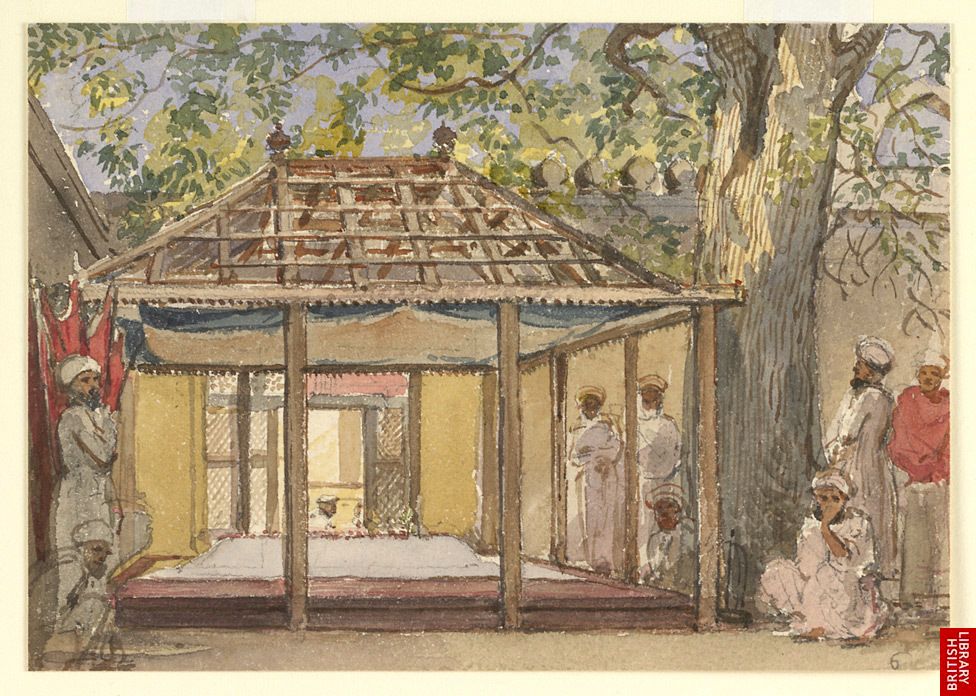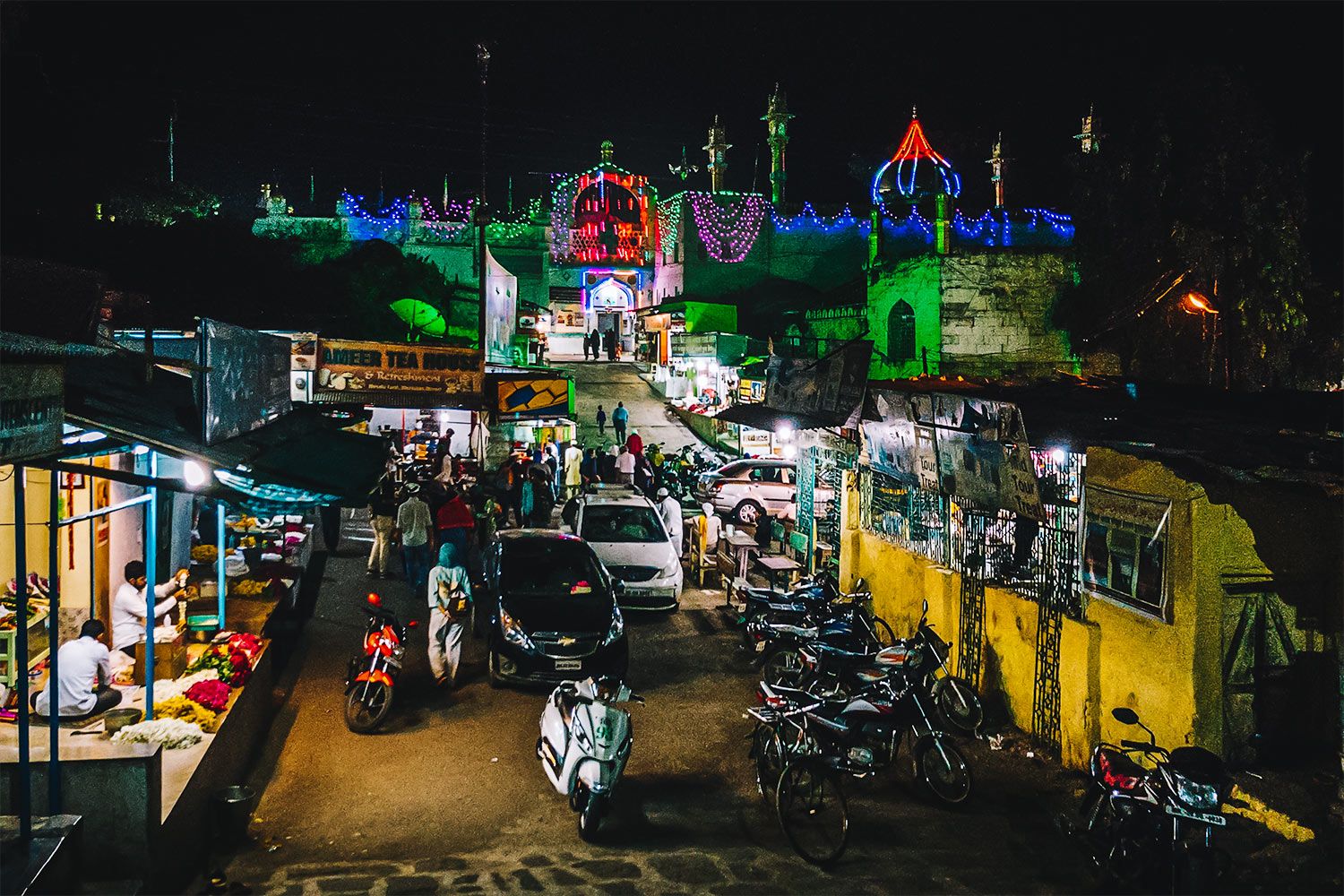Before Aurangzeb’s Tomb
As for Aurangzeb himself, to die asking to be buried so far south from Delhi, from the seat of his empire — how did it feel? Where lay his heart? In Delhi? In the Deccan, where he’d honed and proved himself when young?

All the Great Mughals have magnificent tombs save the last one. Aurangzeb’s grave was so simple, Lord Curzon was moved to upgrade it with marble during his viceregal tenure in India. On Wikipedia, I found a sketch of it as it must’ve looked in the 1850s before Curzon got down to making alterations to it.
Aurangzeb died in 1707.
These days attendants at Aurangzeb’s mausoleum eke out some earnings telling the final events in Aurangzeb’s life briefly: his death in nearby Ahmednagar from natural causes (natural causes, the attendant stresses); his desire to be buried near his teacher Chisti’s tomb; his express command that his mausoleum be simple, within the tiny budget he’d stipulated – fourteen rupees and twelve annas. The man telling me all this by Aurangzeb’s resting place was blind. “I am blind,” he said, humble in a soiled white tunic, a stick limp in his hand. “And I am poor.” He held out a hand. I put money in it, which he took and pointed a finger to a box by his feet, a wooden hundi with a slit on top. I put the same sum in it as I’d given him.
“Where was his palace (in this part of his empire)?” I asked him. I wanted to know if Aurangzeb’s royal residence had been in the fabulous Daulatabad fort. Or Ahmednagar. But the fellow was done with me. There was another tourist at the door, and he had heard him.
Young Aurangzeb spent his energies in the outer reaches of the empire, in the west, the northwest, and in the south in the Deccan. His father Shah Jahan kept him challenged in the Deccan, demanding higher revenues from a poorly performing agrarian region. Aurangzeb decided to annexe the Bahmani kingdoms further south to augment income, but his father decided on his behalf to sign a truce with them, exasperating Aurangzeb, stoking suspicion in him regarding his father’s intentions toward him. Such a downward-spiralling relationship caused the emotional chasm between father and son to grow in proportion to their geographic separation, driving Aurangzeb to wrest the empire through treason and treachery and terrible fratricide.
It is argued that he ruled well, extending the empire to the largest the Mughals ever ruled, increasing its wealth to surpass the other great monarchies of his time across the world. But he also depleted his reserves towards the end.
The last decades of his fifty-year rule were relentlessly spent in battling for possession of the Deccan, at great cost to his treasury and, as regards his fighting men, he lost in that period over two million of them at the rate of a hundred-thousand head a year.
As for Aurangzeb himself, to die asking to be buried so far south from Delhi, from the seat of his empire — how did it feel? Where lay his heart? In Delhi? In the Deccan, where he’d honed and proved himself when young?
Far from the graves of his forebears his remains rest. The first great Mughal is buried in the northwestern reaches of the empire. Aurangzeb, the last great Mughal, is buried in the empire’s deep south. The other four greats lie in Delhi and Agra. There are many descriptions of this Mughal after whom the empire began its decline: valiant, despotic, cruel, and, some even say, syncretic. As many people revere him as despise him. Standing before his grave I wasn’t sure which way I should lean, but I can tell you I was moved for a moment by the asceticism of this man who ruled for so long over so vast an empire.

Sketch of Aurangzeb's Tomb, circa 1850: Wikipedia
